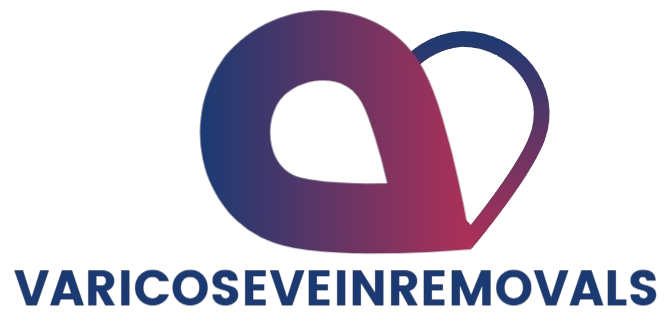If you’re dealing with vein issues like varicose veins or spider veins, you’re not alone. Millions of people experience these conditions, which can range from mild cosmetic concerns to more serious health problems. Fortunately, there are a variety of treatment options available today, from traditional procedures that have been used for decades to newer, less invasive laser treatments. With so many choices, it can be difficult to know which option is best for your unique needs. In this article, we’ll explore the differences between traditional vein treatments and modern laser options to help you make an informed decision.
Traditional Vein Treatments
Traditional vein treatments have been the go-to solution for varicose and spider veins for many years. These methods are still widely used and are particularly effective for more severe cases. Let’s take a closer look at the most common traditional treatments:
Sclerotherapy
Sclerotherapy is a highly effective treatment for smaller varicose veins and spider veins. It involves injecting a special solution into the veins, causing them to collapse and eventually fade. This minimally invasive procedure can be done in a vein clinic and requires little recovery time, making it a popular option for many patients.
Vein Stripping and Ligation
For larger, more problematic veins, vein stripping and ligation may be necessary. This surgical procedure involves removing or tying off the affected veins. It’s typically recommended for cases where varicose veins are causing significant pain or complications. Vein stripping is done under general anesthesia and may require a longer recovery period compared to other treatments.
Compression Therapy
Compression stockings are another traditional treatment option. They apply pressure to the legs, which helps improve blood circulation and reduce symptoms like swelling and aching. While compression therapy alone won’t eliminate varicose veins, it’s often used in combination with other treatments to manage symptoms effectively.
Laser Vein Treatments
Laser vein treatments have become increasingly popular due to their precision, effectiveness, and minimally invasive nature. There are two main types of laser treatments for vein issues: Endovenous Laser Therapy (EVLT) and surface laser treatments.
Endovenous Laser Therapy (EVLT)
EVLT is commonly used for larger varicose veins. A small laser fiber is inserted into the vein through a tiny incision, guided by ultrasound. The laser energy causes the vein to collapse and seal shut. Over time, the body absorbs the sealed vein. This procedure is minimally invasive, requires little downtime, and provides fast results.
Surface Laser Treatments
Surface laser treatments are ideal for treating smaller veins or spider veins, particularly those in more sensitive areas like the face. These treatments use laser energy to target veins just below the skin’s surface without requiring an incision. Over time, the treated veins fade, making this an excellent option for cosmetic concerns. There’s no need for downtime, and recovery is typically quick.
Comparing Laser and Traditional Vein Treatments
Now that we’ve looked at both treatment options, let’s compare them on several key factors:
Effectiveness
Both laser treatments and traditional methods like sclerotherapy are highly effective for treating varicose and spider veins. However, laser treatments often provide faster results with fewer sessions, particularly for smaller veins. EVLT, in particular, is an excellent option for larger veins, while surface lasers are ideal for more cosmetic concerns.
Invasiveness
Laser treatments are generally less invasive than traditional surgical methods like vein stripping and ligation. They typically involve little to no incision, making them less painful and leaving fewer scars. Traditional procedures like vein stripping, however, require cuts and stitches, resulting in a more invasive experience.
Recovery Time
One of the most significant advantages of laser vein treatments is their quick recovery time. Most patients can return to their normal activities within a day or two after the procedure. Traditional vein surgeries, on the other hand, may require a week or more of recovery, depending on the procedure’s complexity.
Suitability for Different Vein Conditions
Laser treatments are particularly effective for smaller veins, such as spider veins, and are an excellent option for cosmetic concerns. However, traditional methods like sclerotherapy and vein stripping may be necessary for larger, more severe varicose veins. EVLT is a great option for larger veins, offering quick results with minimal discomfort.
Long-Term Results
Both laser and traditional treatments offer long-term relief from vein issues. However, the longevity of results can depend on factors like the severity of the condition and the individual’s overall health. While laser treatments can eliminate small veins and improve the appearance of the legs, traditional methods may be more appropriate for long-lasting results in cases of more severe varicose veins.
When to Consult a Vascular Specialist
Deciding between laser and traditional vein treatments is a personal choice that depends on various factors, including the severity of your condition, your overall health, and your cosmetic goals. It’s essential to consult with a vascular specialist or vein doctor to assess your condition and get a professional recommendation tailored to your needs. A vein specialist will conduct a thorough examination, discuss your medical history, and guide you toward the best treatment option for your unique situation.
Conclusion
When it comes to treating varicose and spider veins, both laser and traditional treatments offer effective solutions. Laser treatments are minimally invasive, require less downtime, and are often ideal for smaller veins or cosmetic concerns. Traditional methods like sclerotherapy and vein stripping, on the other hand, are better suited for more severe cases and larger veins.
Ultimately, the right choice for you will depend on your specific condition, goals, and preferences. If you’re unsure which option is best, scheduling a consultation with a vascular surgeon or vein specialist will help you make an informed decision. Regardless of which treatment you choose, it’s important to remember that effective solutions are available to help you achieve healthier, more comfortable veins.



